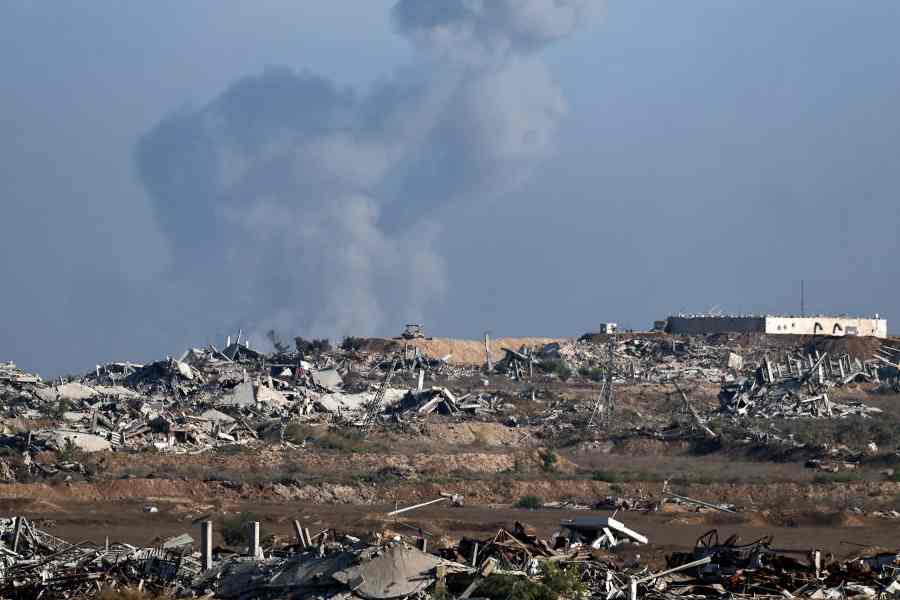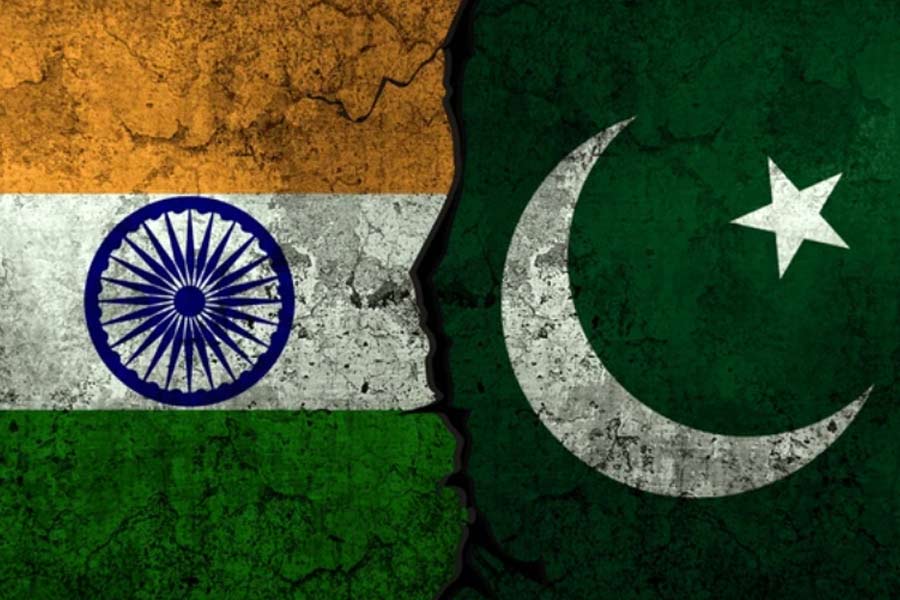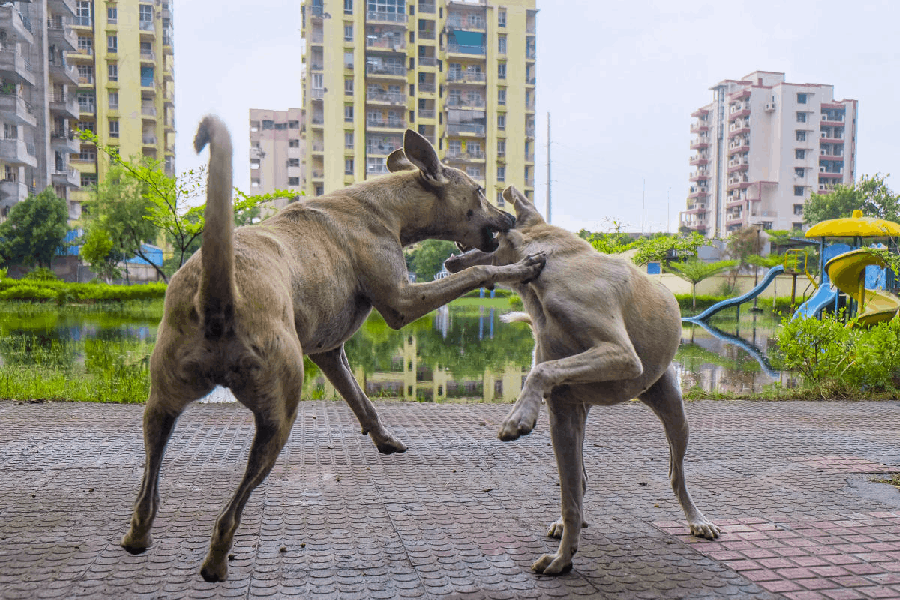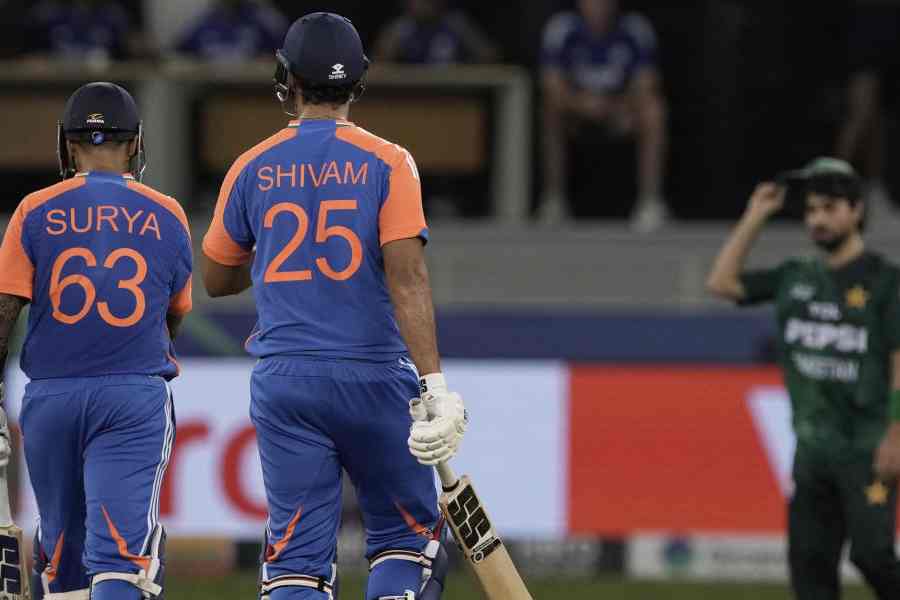 |
The palpable tension notwithstanding, development projects are now visible in Jungle Mahal as the region limps back to normality. Pay-loaders are busy widening roads; ponds are being dug up under the National Rural Employment Guarantee Scheme; the stalls at the roadside markets sport fresh coats of paint; traders are doing business and schools have resumed regular classes.
The villagers say that panchayat activities, which had either been stopped or were taken over by the Maoists and the People’s Committee Against Police Atrocities, have resumed.
Culverts and small bridges are being built to restore the roads that were dug up or blown up. Anganwadi Kendras and Sishu Siksha Kendras for underprivileged children have been revitalised.
Sukumar Hansda, the Jhargram MLA and minister for western region development, said Jungle Mahal would now receive the “peace dividend” and that funds would not be a constraint as chief minister Mamata Banerjee has prioritised the region’s development.
Hansda said Rs 205 crore had been earmarked for his department along with central assistance. However, this is only Rs 10 crore more than last year’s allotment.
“People are happy that peace has returned and development has begun. The problem is not money but the lack of speed in implementation following 34 years of CPM misrule and subsequent Maoist disruptions,’’ Hansda said. He added that the focus would be on irrigation, drinking water and roads.
Hansda cited the cheap rice scheme as the government’s most powerful public relations programme.
However, many of the Mamata government’s schemes, such as the subsidised food, are actually repackaged avatars of programmes initiated by the Left Front government and supported by the Centre, villagers said.
Families living below the poverty line are receiving rice at Rs 2 a kg and 750gm of atta at Rs 5 per head per week, though “not regularly”.
“We used to get subsidised rice during CPM rule too. Sugar is not available in the ration shops. The price of kerosene has gone up from Rs 10 to Rs 18 per litre,’’ complained Prabhadevi Mahato of Koima, close to Jhargram.
But she is happy that 16 girls in her village have received bicycles to travel to school, courtesy the government and the local Bikash Bharati School. In Sijua, Ramgarh and Belpahari too, schoolgirls have received bicycles, local people said.
In Lalgarh, the Santhal village of Chhotopelia, once known as a Maoist bastion, is yet to taste the fruits of paribartan, though.
Trees have been cut down and pay-loaders can be seen widening the laterite pathway that links the village with the metalled road to Jhargram — a sign of the government’s efforts at giving Chhotopelia better connectivity. But it is not clear whether the new government has been able to connect with the villagers, who were with the People’s Committee.
“We lack adequate drinking water, irrigation facilities, a health centre nearby and a tribal-language school. Jobs under the NREGA (National Rural Employment Guarantee Act) are not regularly available. But raising our voices is risky as it might be considered a Maoist activity and may invite fresh arrests,’’ said a village youth.
The villagers say not all the tribals receive the Rs 2-a-kg rice as Mamata had promised at her post-poll Jungle Mahal rallies. But they mainly blame red tape — courtesy panchayat officials and babudom — and politics in the issuance of ration cards to the poor.
As the complexion of the government has turned green from red, the colour of the cards for below-poverty-line (BPL) families under the Centre’s Antyodaya Yojana has changed too. Earlier, the complaints would centre around the CPM’s control over the distribution system and the selection of BPL families for ration cards. Now Trinamul faces the same allegations.
“We have been told that the quantum of monthly subsidised rice per head has come down from 35kg to 24kg. The poorest of the poor, entitled to free rice under the Annapurna scheme, too are complaining they have not received rations for around two months,’’ said Maniklal Baske, a member of the monitoring committee at Binpur block-I panchayat samiti.
The Jharkhandi leader added: “The supply of subsidised rice and other rations is erratic and inadequate. It can be distributed fast if routed through the panchayat, as was done till a few weeks ago. But the government seems to have decided to depend on the ration dealers.”
The Congress, Trinamul’s uneasy ally, too complained about the “bypassing of the panchayats” since the chief minister empowered the district and block administrations to control much of the functions of the elected rural bodies, apparently to end the partisan use and misuse of government funds.
“District magistrates and block development officers now refuse to listen to the elected panchayat members. So complaints about distribution, payment of old-age pension and grants under the Indira Awas Yojana are mounting,’’ Subrata Bhattacharya, Congress leader in Belpahari, said.
The Shabars, the poorest of the poor in the forest villages of the Banspahari-Bhulaveda-Simlipal area, are still not receiving subsidised food regularly, Bhattacharya complained. In Sijua and Ramgarh, panchayat members complained about non-payment of bills and wages under the rural job guarantee scheme.
Hansda denied the charges and defended Mamata’s move on the panchayats, a sizeable section of which are in CPM and Jharkhandi hands in Jungle Mahal.
“The Opposition-run panchayats will not allow us to speed up development projects as that would cost them politically. Unless and until we get control of the panchayats, we have to depend on the government administration,’’ the minister said.
This, his critics said, made it clear that Mamata’s move was influenced more by the Opposition’s substantial control over the panchayat system than her avowed goal to “de-politicise development”.
While the CPM is Trinamul’s main rival in the rest of Bengal, in pockets of Jungle Mahal, particularly the Jhargram subdivision, Jharkhandi groups have a traditional base. The Jharkhand Party (Naren) held the Binpur Assembly seat with Congress support but lost it to the CPM in the 2011 polls.
The Jharkhandis still hold five of the 10 gram panchayats in Binpur-I (Lalgarh) block, and share one with Trinamul. The rest are controlled by the CPM. In Binpur-II (Belpahari) block, the Jharkhandis and the Congress together hold six of the 10 panchayats. Both the block-level panchayat samitis are controlled by the Jharkhandis.
Although Trinamul’s vote share in the region in last year’s Assembly polls was more than 10 per cent higher compared with 2006, the Left Front (nine seats) and the Congress-Trinamul (10 seats) are almost evenly matched in terms of seats in West Midnapore.
Therefore, the equations between Trinamul, the Congress and the Jharkhandis are likely to decide the politics of development in the region as the government gears up for the panchayat polls next year.
But Trinamul leaders say their biggest worry is not the Opposition or estranged allies, but the growing inner-party factional clashes. After Trinamul’s huge success in the Assembly elections, tension has grown between the old loyalists and the new converts, as in the rest of Bengal.
“Those who built the party and fought the CPM are now getting sidelined. New power-seekers are ruling the roost,” said Khamananda Mahato, a Trinamul leader in Lalgarh.
“They are serving their own interests more than those of the tribal and non-tribal poor. The fruits of the government’s well-intentioned moves are not reaching the deserving people.”











